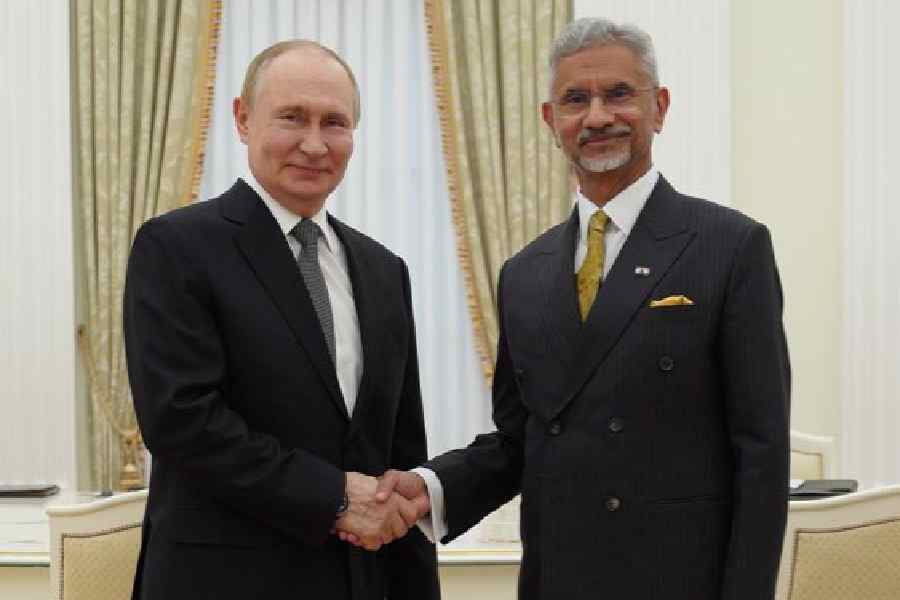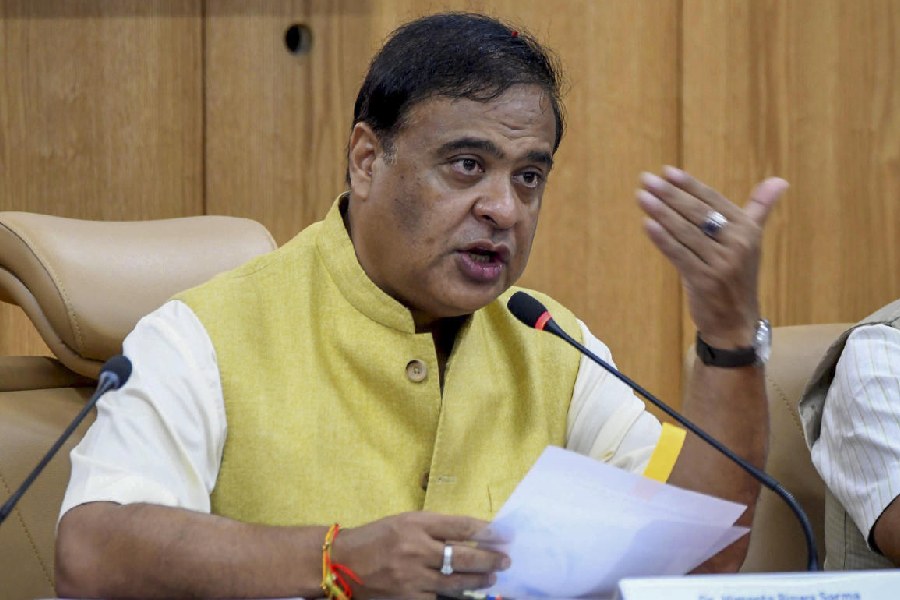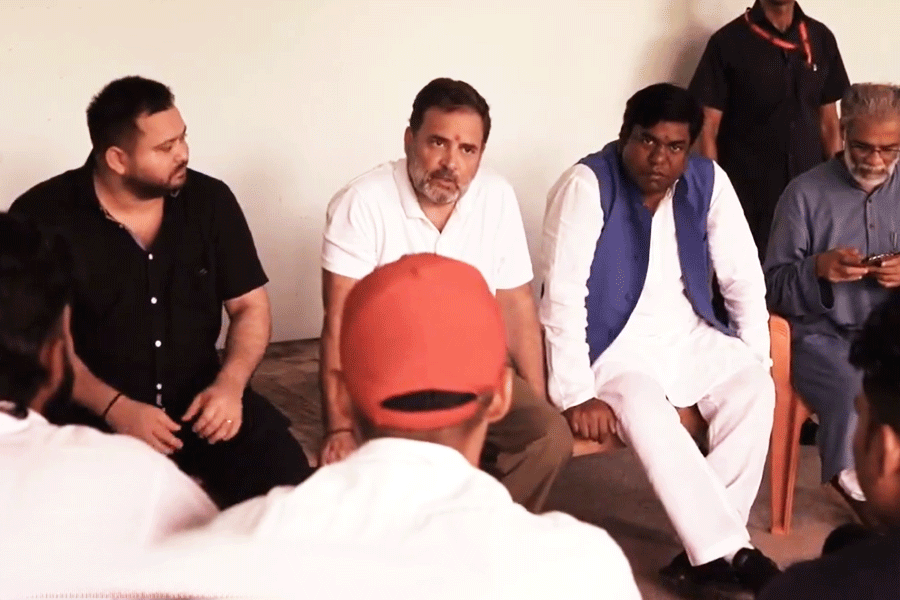Unlike at other puja pandals, this AE Block mandap maintained pin-drop silence. Seventy to 80 visitors filed into the hall and sat staring at the curtain before them. Once they had settled down, “darshan” was announced and the curtain was lifted. Inside was a “living” Durga and Asura.
The Salt Lake branch of the Brahmakumari Centre did not have idols. It had Srestha Ghosh, a Class VIII student, as Durga, and Khushi Dokania, a Class VI student, as Asura. From Sashthi to Dashami, 5pm to 9pm, they held their poses for devotees to come take a glimpse. The glimpses lasted for anything between two minutes and 15 minutes, the latter being accompanied by discourse.

(Saradindu Chaudhury)
“It’s not difficult for us as we have years of practice through meditation,” said Srestha, who played Durga. “We also have seats to sit on, a fan above us, are allowed to blink and drink water during breaks.” The girls were in make-up and costume, bolstered by an artificial eight-handed structure for Durga and a stuffed lion as her mount. Mahishasuramardini played as the background score.
The audience had people gaping, folding their hands in prayer and clicking photos. On Saptami evening a child of about three years burst out crying: “Ekta lok dhuke gyachhe Durga te!” even as his mother tried to quieten him down.
But none of this could distract the duo on the pedestal. “It seems my science teacher came here yesterday but I never even noticed her. My eyes may be open but I am concentrating on god when ‘darshan’ is called and don’t see anything else before me,” said Khushi, a resident of Kestopur.
The girls said they did not miss pandal-hopping and that they have had “living god” duty on previous years too. The headquarters of their Brahmakumari centre is in Bangur, established over 20 years ago. There, with more space at the disposal for Durga puja, students enliven all the gods usually seen at pandals. “I have played Kartik once and Asura twice before this,” smiled Khushi during her break.
Asked how she feels portraying a villain, the meditation trainer at the centre, Sister Sanjna, answered on her behalf. “One has to understand that part of this is mythology. No one, for instance, has 10 hands. But the message is more important,” she began. “Asura too is not a person but negative qualities such as anger and pride. When we get angry our eyes redden and faces contort the way Asura’s face is depicted in the statues.”
Around 300 people had come for darshan each day of the Pujas and Sister Sanjna would share such nuggets with the audience to get them to think. “The reason we host a live goddess is to show that divinity lies not in an idol but inside us. We also want to show that meditation enables practitioners to hold a pose like this all day,” she said.
“We had come to Salt Lake to see the big pujas here but when we heard about a live goddess we left all else and came here,” said Shatabdi Adhikary, a Class XI student who had come with her family from Kestopur. “Seeing the goddess I felt calm. It was as if the goddess would come and speak to us.”











